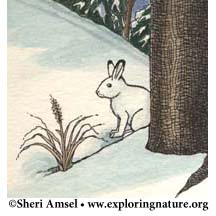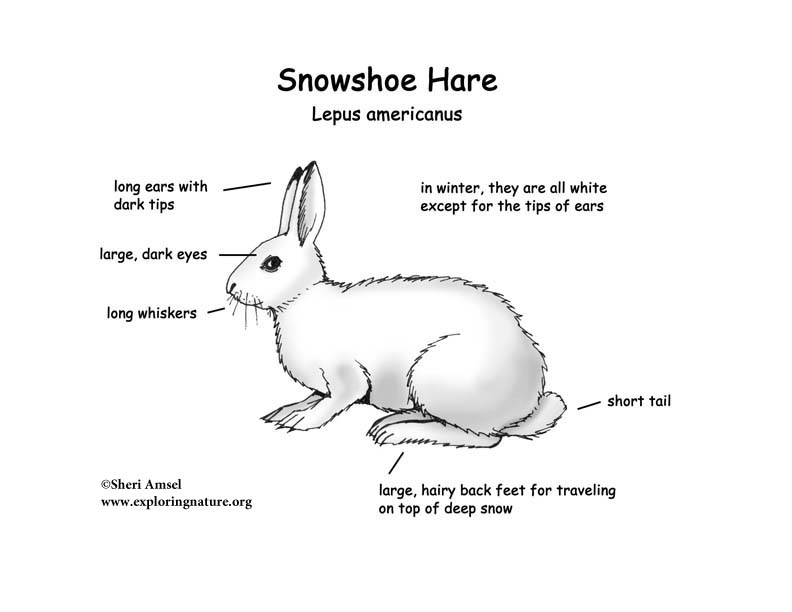

Snowshoe hares are found throughout most of North America.
Snowshoe hares live in conifer and leafy (deciduous) forests and brushy areas where there is lots of food and shelter.
They have large feet for traveling on top of the snow. Their brown fur turns white in winter. They have long ears, though much smaller than jackrabbits.
They are active all winter, feeding in the early morning, dusk and at night. When confronted with a predator, they may stay perfectly still as their fur blends in well (camouflage) with their habitat. However, they also may run. They are very fast and can change directions and leap into the air suddenly to elude predators.
They eat deciduous trees and shrubs, some conifers, grass, and wildflowers.
They are an important food source for many predators. Fox, coyote, owls and hawks all feed on them. The Canadian lynx’s diet is mostly snowshoe hares. When there are fewer hares, there are fewer lynx.
Snowshoe hares usually have 2-3 litters a year from April to August. Females are pregnant for about 35 days (gestation), having up to 8 young.
Snowshoe hares live about 3 years in the wild.
Kingdom: Animalia
Phylum: Chordata
Class: Mammalia
Order: Lagomorpha
Family: Leporidae
Genus: Lepus
Species: L. americanus
When you research information you must cite the reference. Citing for websites is different from citing from books, magazines and periodicals. The style of citing shown here is from the MLA Style Citations (Modern Language Association).
When citing a WEBSITE the general format is as follows.
Author Last Name, First Name(s). "Title: Subtitle of Part of Web Page, if appropriate." Title: Subtitle: Section of Page if appropriate. Sponsoring/Publishing Agency, If Given. Additional significant descriptive information. Date of Electronic Publication or other Date, such as Last Updated. Day Month Year of access < URL >.
Amsel, Sheri. "Hare (Snowshoe)" Exploring Nature Educational Resource ©2005-2024. December 13, 2024
< http://www.exploringnature.org/db/view/400 >

